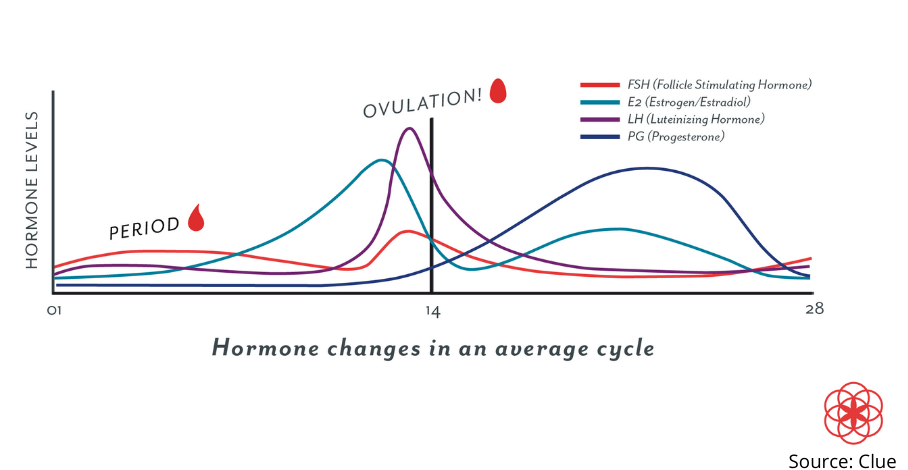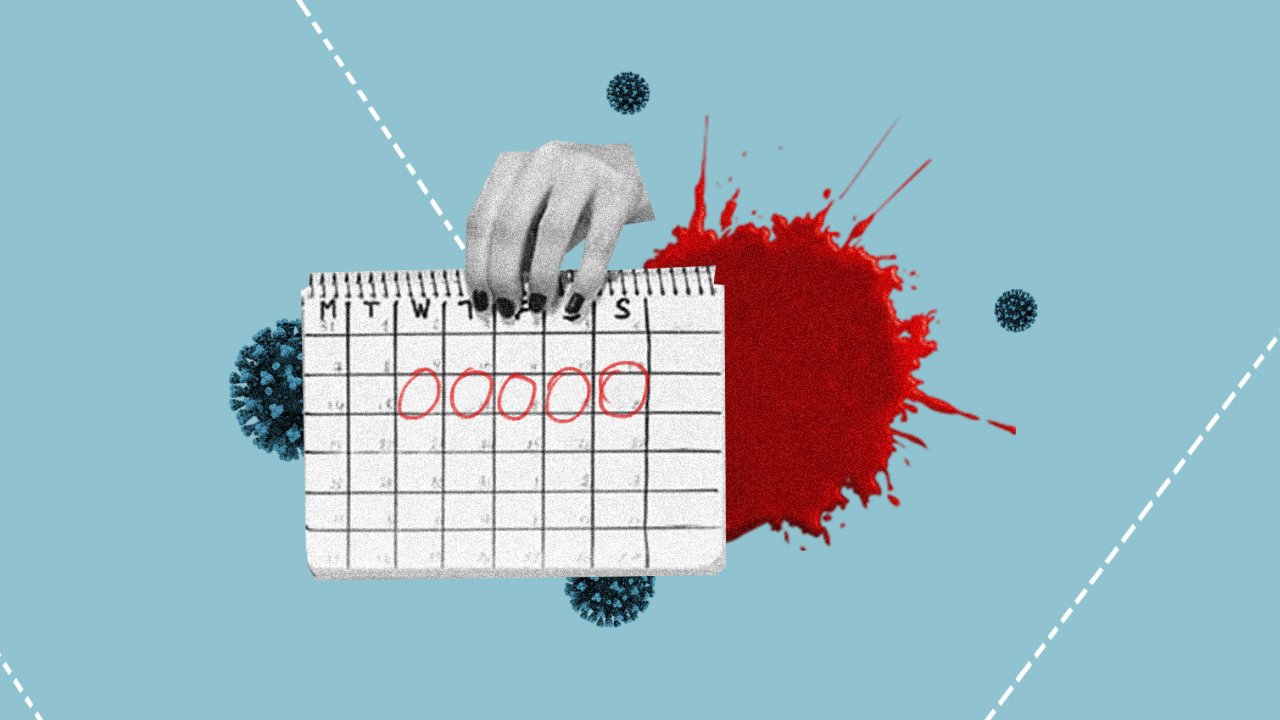A dermatologist who served the Indian Army talks to us about how periods affect skin & hair
This article is based on the IGTV live discussion with Dr. Dipti Dhillon, a renowned cosmetic dermatologist. It explores hormonal changes in all four phases of the menstrual cycle along with tips to deal with acne during the premenstrual phase.
How do periods affect our skin and hair?
Menstruation is a part and parcel of every girl’s life. Female bodies undergo a lot of hormonal changes throughout different phases of their life. From puberty to pregnancy, lactation phase, and finally the menopausal period, hormonal changes are normal endocrinal processes taking place inside women.
Changes or unusual hormonal patterns often act as indicators of inner health. Periods are no different from an interior health barometer, reflecting outside of the body, exactly what has been happening inside. Therefore, it is necessary to note changes in periods. Is the menstrual flow heavy? Are you experiencing intense PMS symptoms or dysmenorrhea? Irregularities and changes in menstruation simply tell us that there is something wrong with the body and it needs to be investigated and taken care of.
Hair and skin are also affected by internal disruptions. Hormonal changes during the four phases of the menstrual cycle affect both hair and the skin, and therefore people experience differences in texture, hydration, and sensitivity on their hair and skin throughout the month.
What are the different changes that take place in our skin and hair during the four phases of the menstrual cycle?
To understand this scientifically, we first need to understand the different hormones present in female bodies. Female bodies have estrogen which is responsible for the hydration of the skin and hair and in maintaining collagen (responsible for the thickness, strength, and structure of the skin). Progesterone, which is responsible for oil production in glands and some amount of testosterone is also present in the body. Excessive testosterone, which is a male hormone, leads to excessive sebum production, facial hair, and acne development which can later develop into PCOS.

Phase 1: Menstrual Phase
(Day 1 of menstrual flow – Day 5/7 or the last day of menstrual flow)
- Both estrogen and progesterone are on a lower side and hence there is no hydration or adequate oil production in the skin and hair.
- Skin feels dry, irritated, and sensitive to all treatments and products.
- Scalp gets dry as well and hair begins to fall out.
- During menstruation, the body is also losing iron which elevates dryness, irritation, and sensitivity.
- Prostaglandins, a category of lipids, are also acting in causing menstrual cramps (uterine contractions) and swelling, which makes our scalp feel swollen and tender. They increase the sensitivity of the scalp.
- DONTs: This is not a good time for hair treatments, hair colouring or getting extensions, rebinding, or getting straightening done. Hair and skin are sensitive and won’t respond to treatments. Don’t wash your hair vigorously or frequently during this time as there will be more dryness and hair fall.
- DOs: Use gentle cleansers like Cetaphil on your skin. Condition your hair with dry conditioners. Use serums and put oil in your hair for moisturizing the tips of the hair.
Phase 2: Follicular Phase
(Day 7 or the last day of the flow – Day 20)
- Estrogen levels start increasing while progesterone is still low. This makes the skin hydrated and boosts collagen formation. The skin feels radiant without the oiliness.
- Luteinizing Hormones (LH) are also secreted for the preparation of ovulation. LH also stimulates the progesterone from Day 14; this leads to a slight production of oil on the skin that slowly progresses till Day 20. At this point, estrogen levels are at a peak and therefore the skin has a perfect balance of oil and hydration, causing it to glow.
- There is also an increase in the production of hyaluronic acid which is responsible for the plumpness of the skin and in the prevention of wrinkles.
- The skin is highly resilient during this time and can tolerate and accept active treatments and denser crèmes.
- You can experiment with crèmes recommended by dermatologists, use chemical peels and thermal ablation treatments.
- This is the period of good flowy hair days, glowing and rejuvenated skin and scalp, and no dryness.

Phase 3: Ovulation Phase
(Day 20 – 24)
- Progesterone starts increasing, leading to oil production, clogging of skin pores, and oiliness.
- If you are prone to acne, then you must start using benzoyl peroxide-based cleansers from Day 20 to prepare the skin for controlling oiliness.
- Use salicylic acid-based cleansers to reduce oil production and increase hydration.
- This is the perfect time for hair-based treatments like hair spa, colouring, extensions, etc., as the scalp is protected by natural oils and would inhibit the penetration of harmful chemicals.
- Wash your hair frequently to avoid sebum production that leads to dandruff.
- This is usually the start of the PMS phase and hence you may feel low and cranky.
Phase 4: Luteal Phase
- Progesterone is at its highest level and your PMS clashes with this as well.
- A lot of acne breaks out, which can be flared up due to junk food eaten during the cravings one feels while experiencing PMS.
- Skin doesn’t look great; it gets patchy, sensitive, and oily.
- DONTs: avoid heavy and active crèmes and products on the skin.
- DOs: use salicylic acid-based cleansers, gentle moisturizers, and wash your hair frequently in order to avoid dandruff and sebum production on the scalp.
Using a menstrual cycle tracker app or system would allow you to switch to different treatments, practices, and products that are effective during different phases.
Excessive sebum on skin and pimples during PMS
Pimples during PMS erupt on the skin due to the excessive sebum production that takes place in this phase. It is advisable to shift to salicylic acid-based cleansers or benzoyl peroxide-based cleansers. The face should be cleaned twice a day – once in the morning and once in the evening. If the skin still feels oily, then you can use micellar water which is also a great make-up remover. Don’t overuse your facewash as it will make your skin dry. A good cleansing routine would be cleaning your face in the morning and evening, and dabbing micellar water on your skin in the afternoon.
You can also use clay masks, chemical peels, and cleansing masks which would clean all the dirt and excess oil from the pores during this time. Avoid crème-based moisturizers. Serum based, aqueous or water-based moisturizers hydrate the skin. However, this is not the time to overuse products on your skin.
If there is acne during PMS, you can moisturize the area with petroleum jelly by taking a small amount of benzoyl peroxide (2.5% – available in tubes in the market) on an earbud or a Qtip, and apply it directly on the zit,which will dry it out. However, visit a dermatologist if the acne still persists.
Edited by Divya Rosaline





